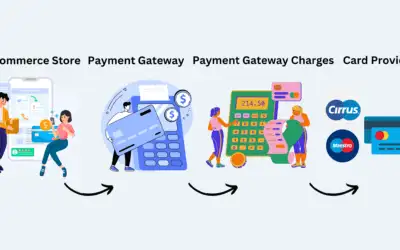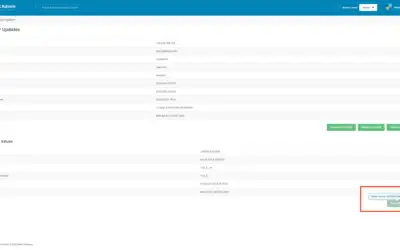The Importance of a Strong Online Presence for Restaurants
In today’s digital age, having a strong online presence is crucial for any business, and restaurants are no exception. A well-established online presence not only helps restaurants reach a wider audience but also allows them to showcase their unique offerings and attract potential customers. With more and more people relying on the internet for restaurant recommendations and online ordering, a strong online presence is the key to staying competitive in the market.
One of the main advantages of a strong online presence for restaurants is the ability to establish a direct connection with customers. Through a well-designed website and active social media presence, restaurants can engage with their customers on a personal level, sharing updates, menu changes, special promotions, and more. This level of interaction helps build a sense of loyalty and trust among customers, making them more likely to choose your restaurant over competitors. Additionally, an online presence allows restaurants to gather valuable feedback from customers, providing insights into what works and what needs improvement.
Understanding the Role of DirectAdmin in Website Management
DirectAdmin plays a crucial role in the effective management of websites. It is a web-based control panel that simplifies the complex tasks of website administration. With DirectAdmin, website owners have the power to manage various aspects of their website, including file management, email accounts, and database management. This user-friendly interface provides a centralized platform for website management, allowing even those with limited technical expertise to navigate and make necessary changes to their website.
One of the key advantages of DirectAdmin is its accessibility and ease of use. With a simple and intuitive interface, website owners can easily update and modify their website content without the need for extensive coding knowledge. DirectAdmin offers a range of features, such as file uploading, FTP account management, and domain management, allowing website owners to have complete control over their website’s functionalities. By utilizing DirectAdmin, website owners can streamline their website management processes and focus on creating engaging content and delivering a seamless user experience.
Choosing the Right Website Design and Layout for a Restaurant
When it comes to choosing the right website design and layout for a restaurant, there are several key factors to consider. Firstly, the design should reflect the restaurant’s brand identity and overall ambiance. This means incorporating elements such as color schemes, fonts, and imagery that align with the restaurant’s theme and style. For example, a fine dining establishment may opt for a sleek and elegant design, while a casual café may choose a more relaxed and inviting layout. It’s important to ensure that the design resonates with the target audience and conveys the desired message about the dining experience.
In addition to aesthetics, functionality is paramount in website design for restaurants. The layout should be user-friendly and intuitive, making it easy for visitors to navigate the site and access the information they need. This includes clear and concise menus, contact information, and online reservation options, if applicable. A responsive design that adapts to different device screens is also essential, as more and more people are accessing websites from their smartphones and tablets. By choosing a design and layout that strikes the right balance between aesthetics and functionality, restaurants can create a positive user experience that keeps customers engaged and encourages them to dine in or order online.
Optimizing Menus and Food Imagery for Online Visibility
When it comes to optimizing menus and food imagery for online visibility, there are several key factors to consider. First and foremost, the menu should be clear, concise, and visually appealing. It should showcase the variety of dishes offered while providing all the necessary information, such as descriptions, prices, and dietary options.
In addition to the menu itself, the images of the food can greatly impact online visibility. High-quality, appetizing images can entice potential customers and make them more likely to choose a particular restaurant. It is important to invest in professional food photography to capture the essence of each dish. Furthermore, optimizing these images by using descriptive alt tags and file names can also enhance search engine visibility and make them more accessible to visually impaired individuals. By paying attention to both the menu and food imagery, restaurants can effectively optimize their online presence and attract a wider audience of hungry customers.
• The menu should be clear, concise, and visually appealing
• Showcase the variety of dishes offered
• Provide all necessary information such as descriptions, prices, and dietary options
• High-quality, appetizing images can entice potential customers
• Invest in professional food photography to capture the essence of each dish
• Optimize images with descriptive alt tags and file names for search engine visibility
By paying attention to both the menu and food imagery:
– Restaurants can effectively optimize their online presence
– Attract a wider audience of hungry customers.
Implementing User-Friendly Features for Enhanced Customer Experience
In today’s digital age, customer experience plays a crucial role in the success of any business, including restaurants. When it comes to online platforms, implementing user-friendly features becomes paramount in order to enhance customer experience. One such feature is a responsive and mobile-friendly website design.
A responsive website design ensures that regardless of the device a customer uses to access the website, whether it’s a smartphone, tablet, or desktop computer, they will have a seamless and optimal browsing experience. This eliminates the frustration of having to zoom in and out or constantly scroll sideways, making it easier for customers to find the information they need, explore the menu, and place orders. Additionally, a mobile-friendly design also has the potential to improve search engine rankings, leading to increased online visibility and attracting more potential customers.
Integrating Online Ordering and Delivery Services
In today’s digital age, integrating online ordering and delivery services has become a crucial aspect for restaurants. With the growing popularity of food delivery and the convenience it offers, it has become imperative for restaurants to adapt and provide seamless online ordering options. By incorporating online ordering and delivery services into their operations, restaurants can cater to a wider customer base and enhance their overall revenue.
One of the major advantages of integrating online ordering and delivery services is the ability to reach and engage with customers beyond the physical confines of a restaurant. Customers can now conveniently browse through the menu, place their orders, and have their food delivered straight to their doorstep. This not only adds convenience for the customers but also creates a seamless and hassle-free experience. Moreover, with the integration of delivery services, restaurants can expand their customer base by attracting those who prefer the convenience of dining in the comfort of their own homes. By embracing such technology-driven solutions, restaurants can stay ahead of the competition and stay relevant in this fast-paced digital landscape.
Utilizing Social Media Platforms to Engage with Customers
Social media platforms have become an essential tool in engaging with customers for restaurants. With the widespread use of platforms like Facebook, Instagram, and Twitter, it is crucial for restaurant owners to establish a strong presence and effectively utilize these platforms to connect with their target audience. Social media provides a unique opportunity to interact with customers directly, share updates about new menu items or promotions, and receive feedback in real-time. By regularly posting engaging content, responding to comments and messages, and running targeted ad campaigns, restaurants can build a loyal customer base and keep their brand top-of-mind.
One key aspect of utilizing social media platforms is to create visually appealing content that showcases the restaurant’s ambiance, dishes, and special events. High-quality photos and videos can grab the attention of potential customers browsing their feeds and entice them to visit the restaurant. Moreover, utilizing hashtags and geotags in posts can help increase visibility and attract local customers. Additionally, restaurants can leverage user-generated content by encouraging customers to share their dining experience on social media and tagging the restaurant. This not only generates free advertising but also enhances the authenticity and credibility of the restaurant’s brand.
Harnessing the Power of Online Reviews and Testimonials
In today’s digital age, online reviews and testimonials have become an integral part of the decision-making process for customers. With just a few clicks, potential diners can gain insights into the quality of a restaurant’s food, ambiance, and service from the experiences of others. Harnessing the power of online reviews and testimonials can greatly impact a restaurant’s reputation and success.
Positive reviews and glowing testimonials can serve as powerful marketing tools, attracting new customers and building trust in the brand. They provide social proof and validate the claims made by the restaurant, giving potential customers the confidence to give it a try. Moreover, online reviews and testimonials can also act as a form of constructive feedback, helping restaurant owners identify areas for improvement and make necessary adjustments. By actively engaging with and responding to reviews, restaurant owners and managers can demonstrate their commitment to customer satisfaction and foster a positive relationship with their clientele.
Implementing Effective Search Engine Optimization (SEO) Strategies
Search Engine Optimization (SEO) is an essential aspect of any successful online presence. Implementing effective SEO strategies is crucial for ensuring that your restaurant’s website ranks high in search engine results pages (SERPs) and attracts targeted organic traffic. By optimizing your website’s content, structure, and keywords, you can improve its visibility and increase the likelihood of potential customers finding your restaurant when searching for relevant keywords or phrases.
One important step in implementing effective SEO strategies is conducting keyword research. By identifying keywords that are highly relevant to your restaurant and have a high search volume, you can incorporate them strategically into your website’s content, meta tags, and URLs. This will help search engines understand the context of your website and match it with relevant user queries. Additionally, optimizing your website’s loading speed and ensuring its mobile-friendliness are also important factors to consider, as search engines prioritize websites that provide a seamless user experience. Overall, implementing effective SEO strategies can significantly improve your restaurant’s online visibility and drive more traffic to your website.
Analyzing Website Analytics and Tracking Performance Metrics
Website analytics and performance metrics play a crucial role in measuring the success of a restaurant’s online presence. By tracking these metrics, restaurant owners and managers can gain valuable insights into how their website is performing and how visitors are engaging with their content. Key metrics to analyze include website traffic, bounce rate, average session duration, and conversion rates.
Analyzing website analytics allows restaurant owners to understand where their website traffic is coming from and which pages are generating the most engagement. This knowledge can help guide marketing strategies and inform decisions on where to allocate resources for maximum impact. By monitoring bounce rates and average session duration, restaurant owners can evaluate the effectiveness of their website’s design and content in keeping visitors engaged. Additionally, tracking conversion rates provides valuable information on how well the website is converting visitors into paying customers.
In conclusion, analyzing website analytics and tracking performance metrics is essential for restaurants to optimize their online presence and improve customer experiences. By consistently monitoring these metrics, restaurant owners can make data-driven decisions that lead to increased website conversions, stronger customer engagement, and ultimately, a thriving online presence.
Why is a strong online presence important for restaurants?
A strong online presence allows restaurants to reach a wider audience, attract new customers, and showcase their menu and offerings effectively.
What is DirectAdmin and what role does it play in managing a website?
DirectAdmin is a web hosting control panel that simplifies website management tasks such as managing files, email accounts, domains, and databases.
How do I choose the right website design and layout for my restaurant?
When choosing a website design and layout, consider factors such as the overall aesthetic, ease of navigation, mobile responsiveness, and the ability to showcase your menu and imagery effectively.
How can I optimize menus and food imagery for better online visibility?
Optimize menus and food imagery by using high-quality images, proper formatting, descriptive menu item names, incorporating relevant keywords, and organizing the menu in a user-friendly manner.
What user-friendly features should I implement to enhance the customer experience on my restaurant’s website?
Some user-friendly features to consider are easy navigation, clear and concise menu descriptions, online reservation options, contact information, and an option to provide feedback or ask questions.
How can I integrate online ordering and delivery services into my restaurant’s website?
You can integrate online ordering and delivery services by partnering with third-party platforms or using website plugins that allow customers to place orders and select delivery options directly from your website.
How can social media platforms help me engage with customers?
Social media platforms provide a direct channel for communication with customers, allowing you to share updates, respond to inquiries, showcase your restaurant’s personality, and receive feedback from customers.
How can I harness the power of online reviews and testimonials for my restaurant?
Encourage customers to leave reviews and testimonials on platforms like Google, Yelp, or your website. Display positive reviews prominently on your website to build trust and attract potential customers.
What are effective search engine optimization (SEO) strategies I can implement for my restaurant’s website?
Effective SEO strategies include optimizing website content with relevant keywords, ensuring proper meta tags and descriptions, utilizing local SEO techniques, and obtaining backlinks from reputable sources.
Why is it important to analyze website analytics and track performance metrics?
Analyzing website analytics and tracking performance metrics provides valuable insights into the effectiveness of your website, helps identify areas for improvement, and allows you to make data-driven decisions to enhance the online presence and customer experience of your restaurant.




